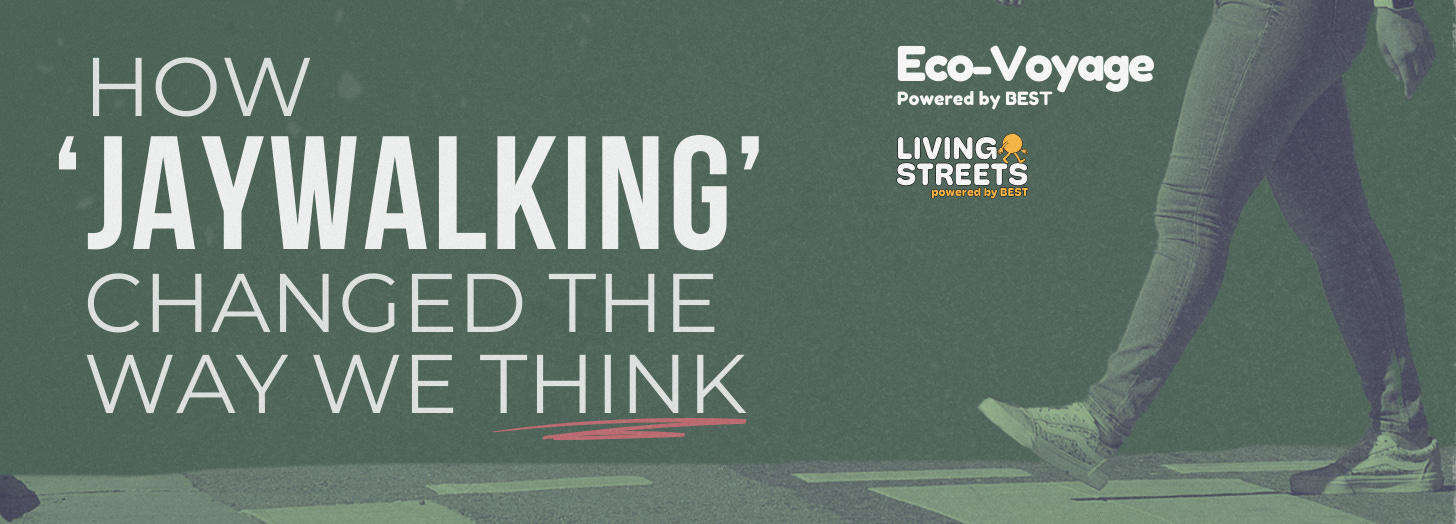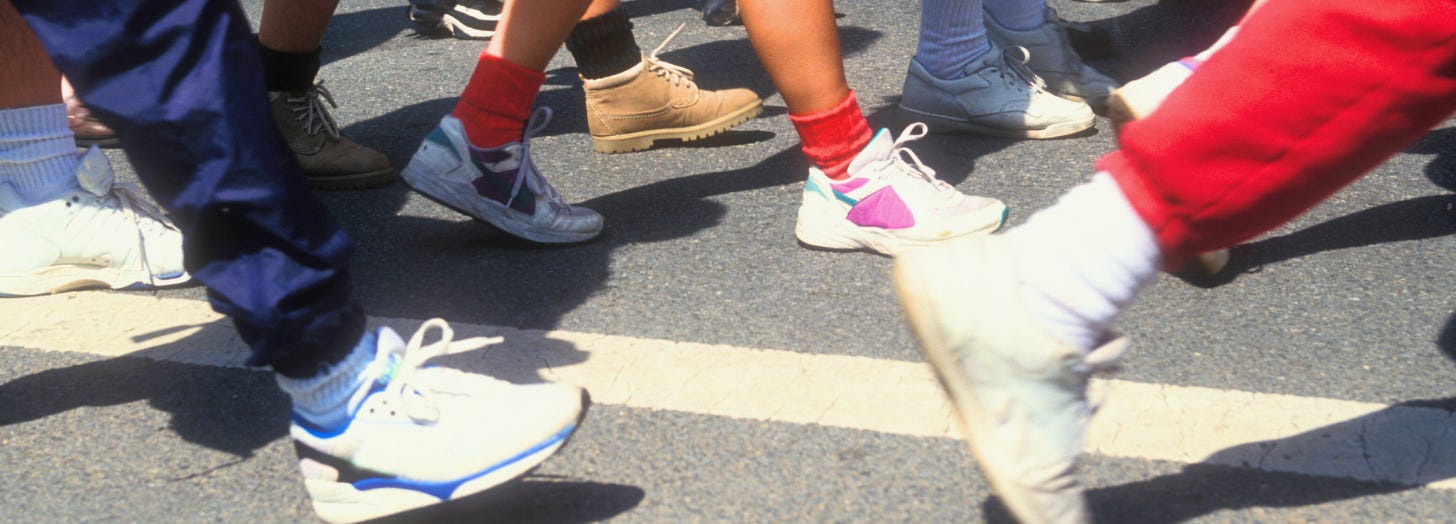How "Jaywalking" Changed the Way We Think
Why does crossing sometimes feel like a crime? Spoiler: it wasn't always this way.
Hi BESTies 💚
Today, we're diving into a transit history topic: ‘jaywalking’.
After our last newsletter, one of our followers highlighted the turbulent history of this term, which is rooted in derogatory, classist language. We thought this was a great learning experience not only for us but all of our BESTies too!
While the term may not carry the same weight today, exploring how it has shaped perceptions of pedestrians and their role on our streets is important.
Let’s unpack this together.
What does "jaywalking" even mean?
Today, ‘jaywalking’ refers to crossing the street unlawfully or recklessly. People often use the word to talk about crossing the street outside a crosswalk (though this isn’t exactly correct).
It’s worth noting many advocacy groups have challenged the use of the term for its problematic origins and implications.
Where did this word come from?
‘Jaywalking’ comes from two words: jay and walking.
‘Jay’ was a derogatory term used to mock people from rural areas unfamiliar with city etiquette. Before ‘jaywalker’, there was a slightly older word ‘jay-driver’, referring to drivers who refused to obey traffic laws.
We wonder why that didn’t stick?
Well, the auto industry in the 1920s heavily promoted the term ‘jaywalking’ to shift the blame for road accidents from cars to pedestrians. This had two outcomes.
First, by prioritizing cars over people in our language, the term 'jaywalking' fundamentally changed how we think about sharing our streets and who is responsible for road safety. The use of the term today reflects the legacy of car-centric culture in our cities today.
Second, the stigmatizing term worked to shame individuals unfamiliar with urban rules, painting them as 'rubes' or less intelligent. As a result, many people also feel ashamed or shy about not knowing certain rules in a new city, often unsure of who to turn to for help or support.
Is it time to ‘drop the jay’?
Today, most people understand 'jaywalking' as crossing outside designated walking zones, and while it is important to follow the rules and make use of pedestrian crossings, we often overlook the importance of fostering a culture of reflection and support as we learn to move around the city on foot, by bike, or any other mode—something we at BEST and Eco-Voyage strive to cultivate.
Today, most people view jaywalking as crossing outside designated walking zones, and the prevailing belief is that streets are meant solely for cars.
The auto industry collectively shamed anyone unfamiliar with the rules, labelling them as ignorant. This mindset often overlooks the importance of fostering a culture of open learning and support—something we at BEST and Eco-Voyage strive to cultivate. We now recognize that it’s not that simple.
What now?
Things are changing! While 'jaywalking' may linger in our vocabulary, the conversations surrounding it have sparked new ideas for moving beyond car-centric planning and language.
As cities like Vancouver reclaim streets as shared spaces through initiatives like Car-Free Day and the Water Street Pedestrian Zone, it’s time for us to rethink how we talk about our streets and the people who use them.
If you’re unsure about the rules of the road, remember: it’s never too late to learn! By educating ourselves and others, we can create safe spaces for learning and foster a supportive community. Let’s put an end to the stigma around being new to these rules.
That’s why Eco-Voyage offers free workshops for newcomers, young adults, and anyone needing a refresher on new or emerging forms of transportation. Together, we can build a more inclusive and understanding environment for everyone on our streets!
Check out our upcoming FREE workshops here.
About BEST
Support sound and active transportation in BC by becoming a BEST member! We’re grateful to our members and supporters whose generous donations help sustain our activities. If you want to continue supporting active and sustainable transportation initiatives in British Columbia, consider becoming a BEST Member.
Members receive first access to our events AND a FREE one-month membership to Mobi!
Resources and Additional Reading:
Holder, S. (2022, August 13). Navigator: Inventing jaywalking and battling to reclaim the Streets. Bloomberg.com. https://www.bloomberg.com/news/newsletters/2022-08-13/navigator-inventing-jaywalking-and-battling-to-reclaim-the-streets
Mangla, R. (2015, August 21). The secret history of jaywalking: The disturbing reason it was outlawed - and why we should lift the ban. Salon. https://www.salon.com/2015/08/20/the_secret_history_of_jaywalking_the_disturbing_reason_it_was_outlawed_and_why_we_should_lift_the_ban/
Norton, P. D. (2007). Street Rivals: Jaywalking and the Invention of the Motor Age Street. Technology and Culture, 48(2), 331–359. http://www.jstor.org/stable/40061474
Stromberg, J. (2015, January 15). The forgotten history of how automakers invented the crime of “jaywalking.” Vox. https://www.vox.com/2015/1/15/7551873/jaywalking-history







